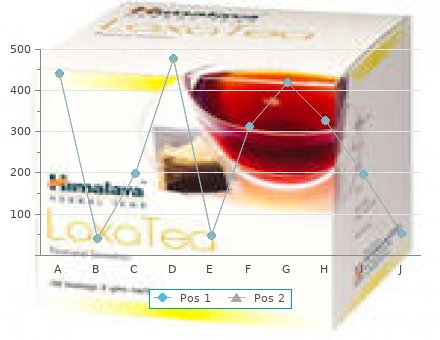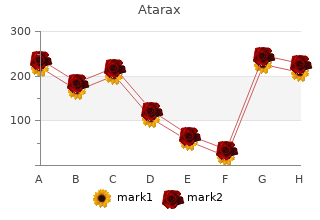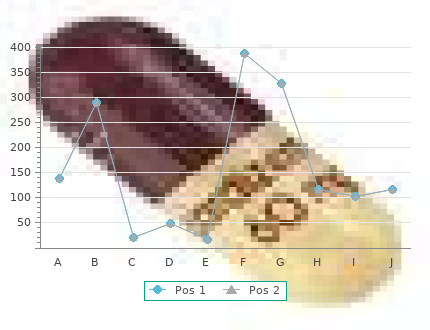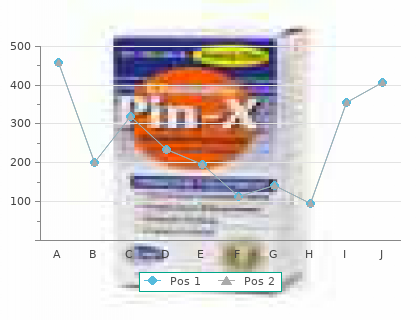Atarax
2018, West Coast University, Thordir's review: "Atarax 25 mg, 10 mg. Buy online Atarax cheap.".
Their dendritic trees atarax 10 mg low cost anxiety symptoms stomach pain, neurons run in all directions and reach ap- which ramify predominantly in the molecu- proximately 12 Purkinje dendritic trees. The cells have short axons, which In the lower third of the molecular layer lie either terminate in a glomerulus or ramify the slightly larger basket cells (A1). The Golgi long axons run horizontally above the cells belong to the inhibitory interneurons. Purkinje cell bodies and give off collaterals, the terminal branches of which form net- Glia (D) works (baskets) around the Purkinje cell Apart from the regular glial cell types, such bodies. The electron-microscopic image as the oligodendrocytes (D5) and proto- shows that the basket cell fibers form plasmic astrocytes (D6) commonly found in numerous synaptic contacts (B2) with the the granular layer, there are also glial cells Purkinje cell, namely, at the base of the cell that are characteristic for the cerebellum: body (axon hillock) and at the initial seg- Bergmann’s glia and the penniform glia of ment of the axon up to where the myelin Fañanás. The rest of the Purkinje cell body is enveloped by Bergmann’s glial cells ThecellbodiesoftheBergmann’scells(D7)lie (B3). The positioning of the synapses at the between the Purkinje cells and send long axon hillock indicates the inhibitory supporting fibers vertically toward the sur- character of the basket cells. Granule Cells (C) The supporting fibers carry leaflike processes and form a dense scaffold. Berg- These small, densely packed neurons form mann’s glia begins to proliferate where the granular layer. The Fañanás cells (D8) the Golgi impregnation shows three to five have several short processes with a charac- short dendrites which carry clawlike thick- teristic penniform structure. The thin axon (C4) of the granule cell ascends verti- cally through the Purkinje cell layer into the molecular layer, where it bifurcates at right angles into two parallel fibers (p. The granular layer contains small, cell-free islets (glomeruli), in which the clawlike dendritic endings of the granule cells form synaptic contacts with the axon terminals of afferent nerve fibers (mossy fibers, p. The electron-microscopic image shows complex, large synapses (glomeru- lus-like synaptic complexes), which are en- veloped by glial processes. Cerebellar Cortex 159 11 33 A Basket cell (according to Jacob) 44 22 C Granule cell 22 B Purkinje cell with basket cell synapses, 88 electron-microscopic diagram (according to Hámori Szentágothai) 77 66 55 D Glial cells of the cerebellum E Golgi cell (according to Jacob) Kahle, Color Atlas of Human Anatomy, Vol. There are two excitation of one row of Purkinje cells inhib- different types of terminals: climbing fibers its all neighboring Purkinje cells; this sharp- and mossy fibers. The climbing fibers (AC1) terminate at the Purkinje cells by splitting up and attaching Functional Principle of the Cerebellum (D) like tendrils to the ramifications of the den- dritic tree. Each climbing fiber terminates at The axons of the Purkinje cells (D4) termi- a single Purkinje cell and via axon collaterals nate at the neurons of the subcortical nuclei also at some stellate and basket cells. The (D10) (cerebellar nuclei and vestibular nu- climbing fibers originate from neurons of clei). Purkinje cells are inhibitory neurons the olive and its accessory nuclei. They have a strong inhibitory effect on the neurons of The mossy fibers (BC2) divide into widely the cerebellar nuclei, which continuously divergent branches and finally give off receive excitatory input exclusively via axon numerous lateral branches with small collaterals (D11) of the afferent fibers rosettes of spheroid terminals. Only spinocerebellar and pontocerebellar tracts when Purkinje cells are inhibited by inhibi- and also fibers from nuclei of the medulla. The structure of the cerebellar cortex is de- Hence,thecerebellarnucleiareindependent termined by the transverse orientation of synaptic centers, which receive and transmit the flattened dendritic trees of the Purkinje impulses and in which there is continuous cells (ACD4) and the longitudinally extend- excitation. Transmission is regulated by the ing parallel fibers of the granule cells cerebellar cortex by means of fine-tuned in- (B–D5), which form synapses with the hibition and disinhibition. They receive excitatory input through direct contact with climbing fibers (C1) and indirectly through mossy fibers (C2) via in- terposed granule cells (CD6). The axons of granule cells bifurcate in the molecular layer into two parallel fibers each, which measure approximately 3mm in total length and travel through approximately 350 dendritic trees. About 200000 parallel fibers are thought to pass through each den- dritic tree. Stellate cells (C7), basket cells (C8), and Golgi cells (C9) are inhibitory inter- neurons which inhibit Purkinje cells. Neuronal Circuits 161 5 13 4 – 6 5 – 10 4 1 11 11 A Terminal of a climbing fiber 12 12 6 6 D Neuronal connections between cere- bellar cortex and nuclei (according to Eccles, Ito, and Szentágothai) 3 5 7 B Terminal of a mossy fiber 2 4 5 1 9 2 8 2 C Neuronal connections in the 6 cerebellar cortex (diagram) 1 Kahle, Color Atlas of Human Anatomy, Vol.


In ad- cial skin layers are drained by venules atarax 25mg without a prescription anxiety vest for dogs, which form a venous dition, aerobically trained humans are capable of higher plexus in the superficial dermis and eventually drain into sweat production rates; this increases heat loss and induces many large venules and small veins beneath the dermis. The vascular pattern just described is modified in the tis- The vast majority of humans live in cool to cold regions, sues of the hand, feet, ears, nose, and some areas of the face where body heat conservation is imperative. The sensation in that direct vascular connections between arterioles and of cool or cold skin, or a lowered body core temperature, venules, known as arteriovenous anastomoses, occur pri- elicits a reflex increase in sympathetic nerve activity, which marily in the superficial dermal tissues (see Fig. Heat loss contrast, relatively few arteriovenous anastomoses exist in is minimized because the skin becomes a poorly perfused in- the major portion of human skin over the limbs and torso. As long as the skin tem- If a great amount of heat must be dissipated, dilation of the perature is higher than about 10 to 13 C (50 to 55 F), the arteriovenous anastomoses allows substantially increased neurally induced vasoconstriction is sustained. However, at skin blood flow to warm the skin, thereby increasing heat lower tissue temperatures, the vascular smooth muscle cells loss to the environment. This allows vasculatures of the progressively lose their contractile ability, and the vessels 286 PART IV BLOOD AND CARDIOVASCULAR PHYSIOLOGY passively dilate to various extents. The reddish color of the plied by two umbilical arteries, which branch from the in- hands, face, and ears on a cold day demonstrates increased ternal iliac arteries, and is drained by a single umbilical vein blood flow and vasodilation as a result of low temperatures. The umbilical vein of the fetus returns oxygen To some extent, this cold-mediated vasodilation is useful be- and nutrients from the mother’s body to the fetal cardio- cause it lessens the chance of cold injury to exposed skin. Although many liters of oxy- inadequate clothing is worn, heat loss would be rapid and hy- gen and carbon dioxide, together with hundreds of grams pothermia would result. This large chemical exchange without cellular exchange is possible because the fetal and FETAL AND PLACENTAL CIRCULATIONS maternal blood are kept completely separate, or nearly so. The Placenta Has Maternal and Fetal The fundamental anatomical and physiological structure Circulations That Allow Exchange Between for exchange is the placental villus. As the umbilical arter- ies enter the fetal placenta, they divide into many branches the Mother and Fetus that penetrate the placenta toward the maternal system. The development of a human fetus depends on nutrient, These small arteries divide in a pattern similar to a fir tree, gas, water, and waste exchange in the maternal and fetal the placental villi being the small branches. The human fetal placenta is sup- laries bring in the fetal blood from the umbilical arteries Fetal lung Arteries to upper body High-resistance pulmonary vessels Ductus Pulmonary arteriosus artery Foramen 31 ovale Superior FIGURE 17. Schematic representation of the left and right sides of the fe- tal heart are separated to empha- 52 62 size the right-to-left shunt of blood through the open foramen ovale in Right Left ventricle ventricle 58 the atrial septum and the right-to- Inferior left shunt through the ductus arte- vena cava 67 Abdominal riosus. The numbers 27 Portal represent the percentage of satura- vein tion of blood hemoglobin with oxygen in the fetal circulation. Iliac Closure of the ductus venosus, 26 arteries Liver 80 foramen ovale, ductus arteriosus, 58 Umbilical Umbilical artery and placental vessels at birth and Syncytiotrophoblast vein the dilation of the pulmonary vas- Cytotrophoblast culature establish the adult circula- tion pattern. The insert is a cross- sectional view of a fetal placental villus, one of the branches of the Intervillous tree-like fetal vascular system in space the placenta. The fetal capillaries Fetal provide incoming blood, and the placenta sinusoidal capillaries act as the ve- Maternal nous drainage. The villus is com- placenta pletely surrounded by the maternal blood, and the exchange of nutri- Fetal Syncytial Spiral artery Endometrial vein ents and wastes occurs across the capillary knot fetal syncytiotrophoblast. CHAPTER 17 Special Circulations 287 and then blood leaves through sinusoidal capillaries to the pinocytosis and exocytosis. Exchange occurs in the fetal cap- through the lipid bilayer of cell membranes. For example, illaries and probably to some extent in the sinusoidal capil- lipid-soluble anesthetic agents in the mother’s blood do en- laries. The mother’s vascular system forms a reservoir ter and depress the fetus. As a consequence, anesthesia dur- around the tree-like structure such that her blood envelops ing pregnancy is somewhat risky for the fetus. The underlying cytotrophoblast is ticularly oxygen, because of the limitations of passive ex- composed of less differentiated cells, which can form addi- change across the placenta. The PO2 of maternal arterial tional syncytiotrophoblast cells as required. As cells of the blood is about 80 to 100 mm Hg and about 20 to 25 mm syncytiotrophoblast die, they form syncytial knots, and Hg in the incoming blood in the umbilical artery. This dif- eventually these break off into the mother’s blood system ference in oxygen tension provides a large driving force for surrounding the fetal placental villi. Fortunately, fetal mother adapt to the size of the fetus, as well as to the oxy- hemoglobin carries more oxygen at a low PO2 than adult gen available within the maternal blood. In addition, minimal placental vascular anatomy will provide for a small the concentration of hemoglobin in fetal blood is about fetus, but as the fetus develops and grows, a complex tree of 20% higher than in adult blood.

This may be ex- ic ankle pain has been better appreciated in recent years atarax 25 mg overnight delivery anxiety symptoms yahoo answers. This is discussed more fully under the category of Among the four most common impingement syn- osseous injuries. Intra-articular synovial hypertrophy The tibiofibular syndesmosis is an important stabilizer of and fibrosis may occur in the lateral gutter secondary to the distal tibiofibular joint. It consists of the anteroinfe- capsular or ligamentous tears associated with inversion rior tibiofibular ligament, the posteroinferior tibiofibular injuries. This condition is optimally assessed with MR ligament, the transverse tibiofibular ligament, and the in- arthrography, although positive experience with this ap- terosseous tibiofibular ligament. Disruption or irregularities of the ligaments, ankle, excluding Morton’s neuroma, is tarsal tunnel syn- degenerative changes at the distal tibiofibular joint, and drome. The tarsal tunnel is a fibro-osseous space formed proximal extension of fluid into the lateral gutter (greater by the talar surface, the sustentaculum tali, and the cal- than 1 cm) aid in making the diagnosis. It is traversed by the posterior tibial, flexor dig- Medial Collateral Ligament itorum longus, and flexor hallucis longus tendons, the tibial nerve and its branches and accompanying vessels. The medial collateral ligament plays an important role in In about 50% of cases, tarsal tunnel syndrome is idio- medial ankle instability. Marked inter-individual differ- pathic, whereas in the other 50% a specific cause is iden- ences are found for the main components (tibionavicular, tified, such as space occupying lesions including gan- tibiospring, tibiocalcaneal, deep posterior and anterior glion, varicosities, lipoma, accessory muscles, and nerve- tibiotalar and superficial posterior tibiotalar bands). The sheath tumors, as well as pronation or hindfoot valgus de- tibionavicular ligament is a thickened fibrous layer of the formity, and fracture of the medial malleolus and calca- ankle capsule. Patients present with a positive Tinel’s sign and ments are the longest, while the tibiocalcaneal and poste- pain, burning and numbness along the plantar surface of rior deep tibiotalar ligaments are the thickest. Spring Ligament Entrapment neuropathies of branches of the tibial nerve include entrapment of the first branch of the lateral plan- The spring ligament plays an important role in the stabi- tar nerve (Baxter’s nerve), which presents with heel pain lization of the longitudinal arch in the midfoot. Zanetti is often associated with hypertrophy of the abductor hal- decrease in diameter is most likely caused by a change in lucis muscle but is also produced by inflammation asso- the location of the neuroma, which, as it becomes dislo- ciated with plantar fasciitis and heel spur. Another cause of heel pain, often seen in joggers and long-dis- tance runners is jogger’s foot, which is produced by en- Sinus Tarsi Syndrome trapment of the medial plantar nerve secondary to valgus heel deformity. Sinus tarsi syndrome most commonly develops after an Treatment of the entrapment neuropathies is initially inversion injury (70%) and is often associated with tears conservative but may require surgical release of the of the lateral collateral ligaments. US and tients with rheumatologic disorders or abnormal biome- MR imaging are the imaging modalities of choice for di- chanics, such as pes planes deformity and posterior tibial agnosing extrinsic mechanical compression of the tibial tendon dysfunction. MR imaging has the advantage The sinus tarsi is a lateral space located between the of depicting associated denervation muscle edema and talus and the calcaneus. More medially, the sinus tarsi is continuous with the tarsal canal in which the in- Morton’s Neuroma terosseous talocalcaneal ligaments traverse. Although the latter are not truly lateral structures, they are impor- Morton’s neuroma is a benign non-neoplastic abnormali- tant in the overall function of the lateral ankle and hind- ty characterized by neural degeneration and perineural foot complex. The plantar interdigital nerves of the second and Patients with sinus tarsi syndrome present with hind- third intermetatarsal spaces are most commonly involved. Associated MR mani- neuroma and is therefore considered to be useful for nar- festations include edema, sclerosis and cystic changes in rowing the differential diagnosis of forefoot pain. US has the roof of the sinus tarsi, cystic changes at the critical demonstrated comparably good results. Morton’s neuro- angle of Gissane, lateral collateral ligament tears, and, ma is of low signal intensity on T2-weighted MR images occasionally, posterior tibial tendon tear. The use of in- the subtalar joint and subchondral cysts may be present travenous gadolinium contrast is not recommended be- in advanced cases. MR imaging Fluid in the sinus tarsi should be differentiated from permits the exact location of Morton’s neuroma, allowing the normal extension of fluid from posterior subtalar joint for precise pre-surgical planning. An MR Plantar Fasciitis effectiveness study has demonstrated that the clinical diagnosis of Morton’s neuroma is altered in more than Plantar fasciitis is one of the more common overuse in- one fourth of cases following MR imaging, and a change juries in running sports. The plantar fascia is a multilay- in location or number occurs in one-third of the remain- ered fibrous aponeurosis that extends from the postero- ing cases. These changes in diagnosis and location medial calcaneal tuberosity to the plantar plates of the prompt a change in the treatment plan in more than 50% metatarsophalangeal joints, the flexor tendon sheaths, of the feet. Large Morton’s neuromas (> 5 mm-diameter) are more When the metatarsophalangeal joints are dorsiflexed dur- commonly symptomatic than smaller ones. Post-opera- ing gait, the windlass mechanism of the plantar fascia tive outcome depends on the size as measured by MR tightens and causes repetitive traction on the calcaneal imaging.

After surgery order 10 mg atarax overnight delivery anxiety 6 weeks postpartum, but prior to the discovery of metastases, a panel of experts recommended a course of chemotherapy. The office record was not clear that the patient had been informed about the recommendation for chemotherapy. The patient stated that she would have accepted the risks to have more time to spend with her family if she had been given the choice. We advise the use of the SOAP format for documentation of physi- cian–patient encounters. SOAP is an acronym for subjective, objective, 98 Weiss assessment, and plan—the patient’s subjective complaints, the physician’s objective findings, the physician’s assessment, and his or her plan for evaluation and management. It allows the physician to organize his or her thoughts and document an approach that is best suited for the care of the patient. Had the physician in the case just described documented his assessment and plan, he would have avoided a costly malpractice suit. Every physician’s office or clinic should have a fail-safe system in place to ensure that every report, indeed every patient-related scrap of paper, must be read and initialed by a physician before being added to a patient’s chart. The decision to wait, to observe, or to repeat an evaluation is acceptable as long as it is documented and explained. Members of large groups who rotate through satellite offices have an extra burden in this regard. Court documents describe many cases where elevated prostate-specific antigens and other lab tests, abnormal pathology reports, mammograms, X-rays, and so on are filed without being reviewed by a physician. It is alleged that had the original report been acted on, the cancer would have been diagnosed at a time when a cure was possible. This is a difficult argument to refute, especially to a public trained in the value of early detection and in the face of a clear breach in the standard of care. The Telephone A major pitfall for physicians is treating patients over the telephone. However, the doctor must be satisfied that he or she has gathered all the necessary information and the patient understands the recommendation and the need for follow- up. In addition, it is critical that telephone conversations be documented and entered into the medical record. It is also necessary to inform the attending physician of any actions or encounters that occur in the on-call setting. Too often, malpractice suits hinge on a credibility test between the memory of the physician and the testimony of the patient. When there is any doubt, the doctor should meet the patient in the emergency room for a formal evaluation. A famous plaintiff attorney once stated that he would never have a problem earning a good living by suing doctors as long as they persisted in the “stupidity” of treating patients over the telephone. Chapter 8 / Risk Management 99 Prescription Errors These are a common source of litigation for family physicians. There are so many instances of patients receiving Purinethol when propylthiouracil was prescribed that in June 2003, GlaxoSmithKline sent health care professionals a “Medication Errors Alert,” warning of the consequences of this error. Patients must be well-informed regarding the drugs they are pre- scribed. It is a good idea to include the indication on the prescription so that a patient does not inadvertently take an antibiotic in place of an antihypertensive, for example. Because Purinethol has its name imprinted on every tablet, an informed patient would not take the wrong drug. Patients need to be alerted about other look-alike and sound-alike medications. They should also be alerted regarding correct dosages, allergies, side effects, and the appropriate use of controlled substances. Informed consent is required and should be documented, especially for drugs that may have serious side effects. Excessive prescribing and inappropriate use of prescription drugs are grounds for malpractice suits as well as loss of prescribing privileges and suspension or loss of a medical license. Refill practices must be clearly defined for the benefit of patients and pharmacists. The pharmacist must understand the physician’s policy concerning controlled substances. Steps must be taken to prevent hoarding and then overdosing at a later date.
10 of 10 - Review by E. Gunnar
Votes: 168 votes
Total customer reviews: 168


